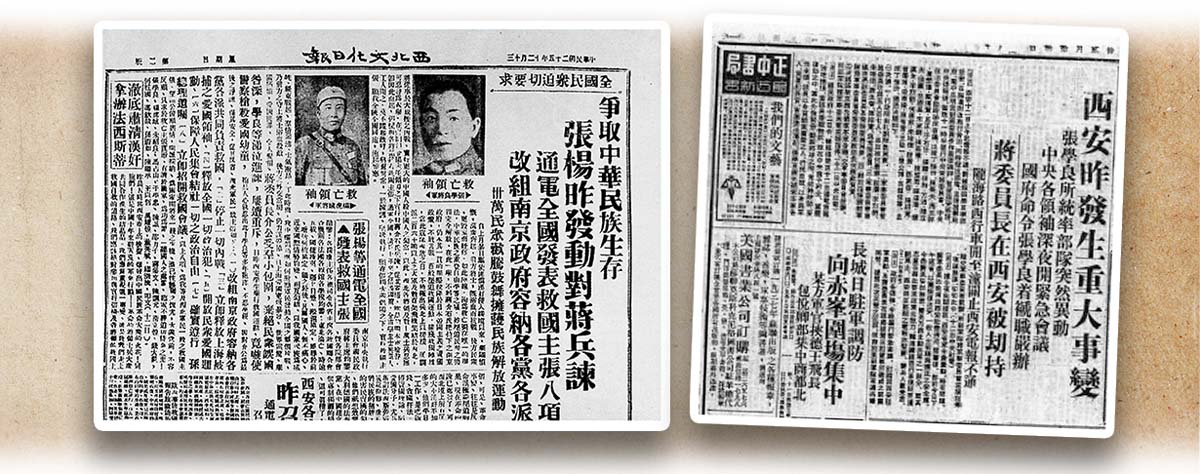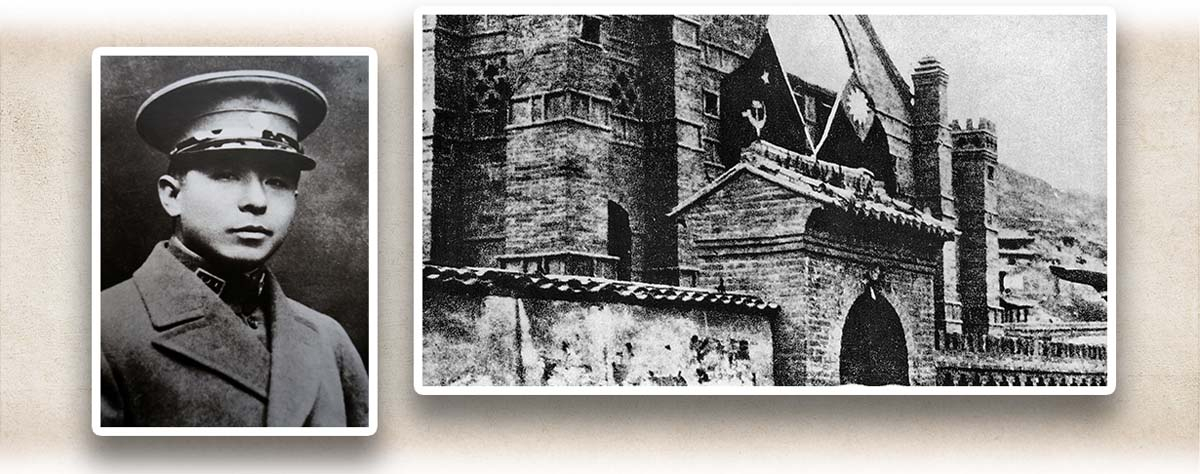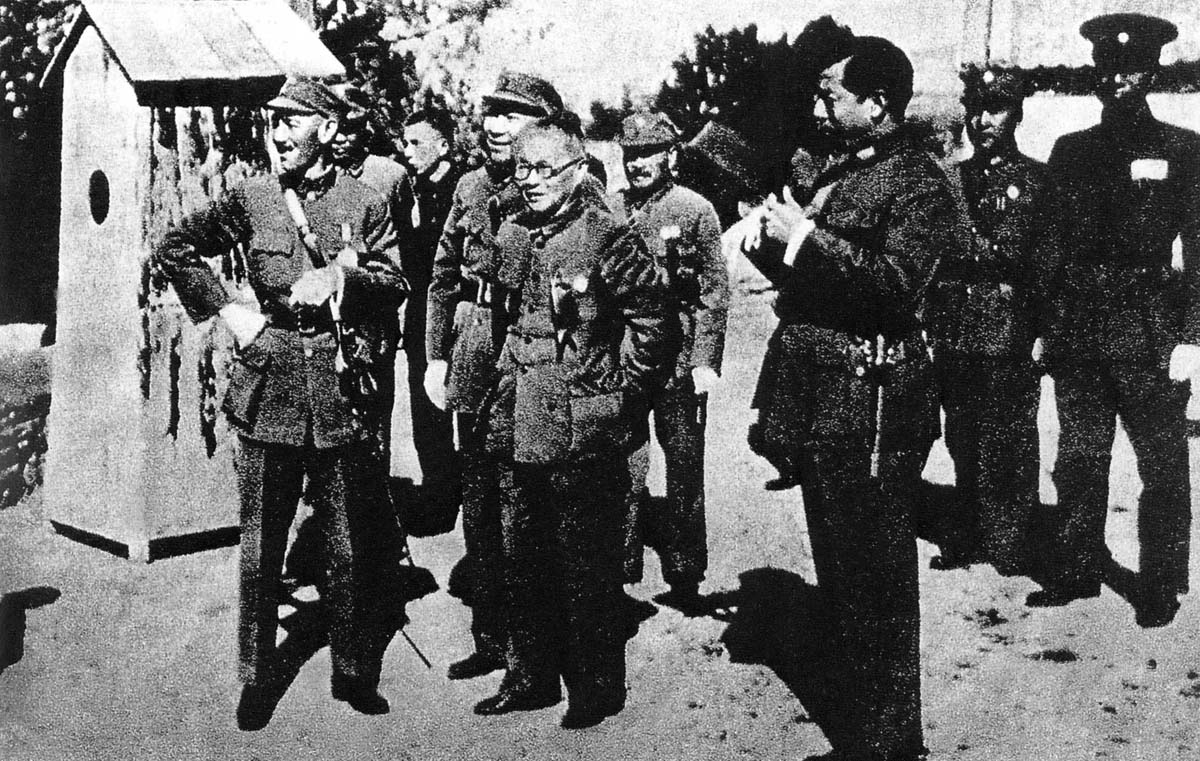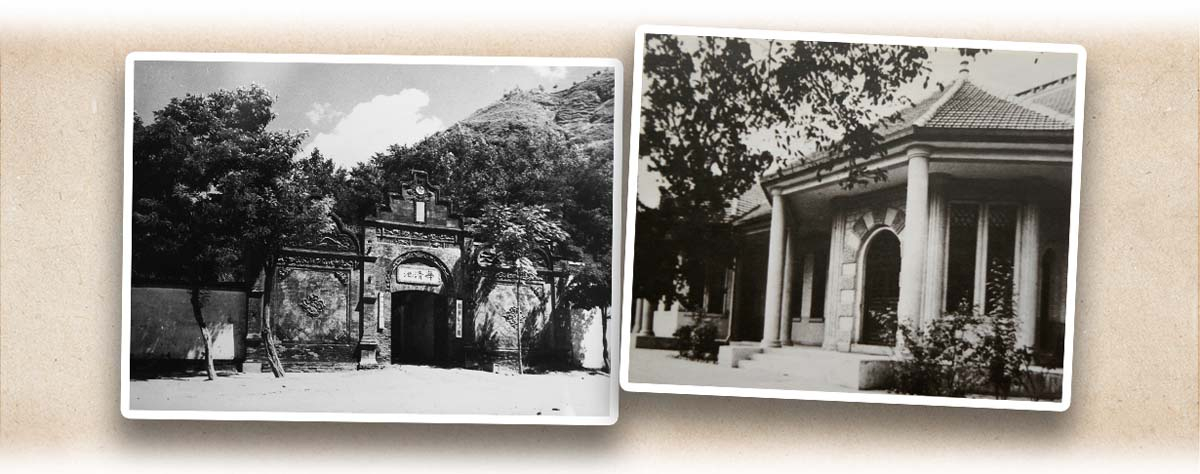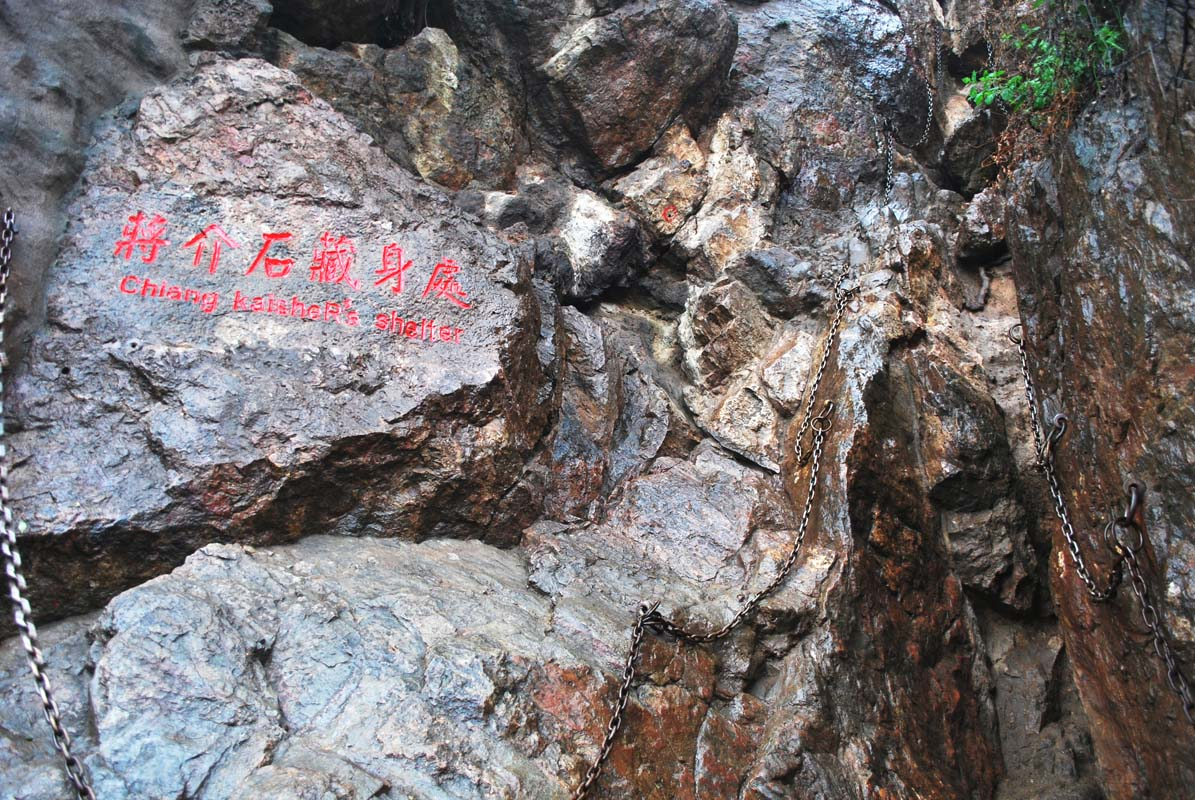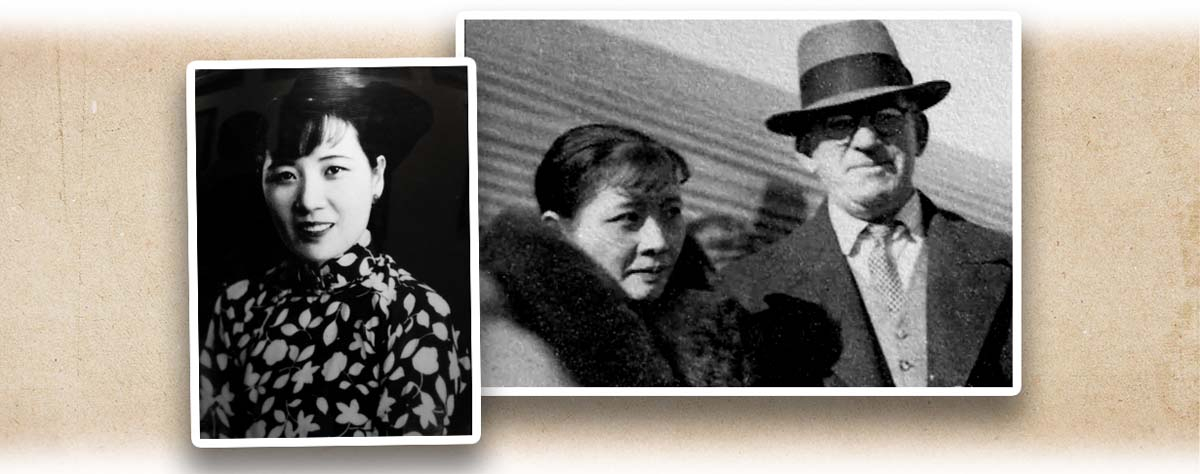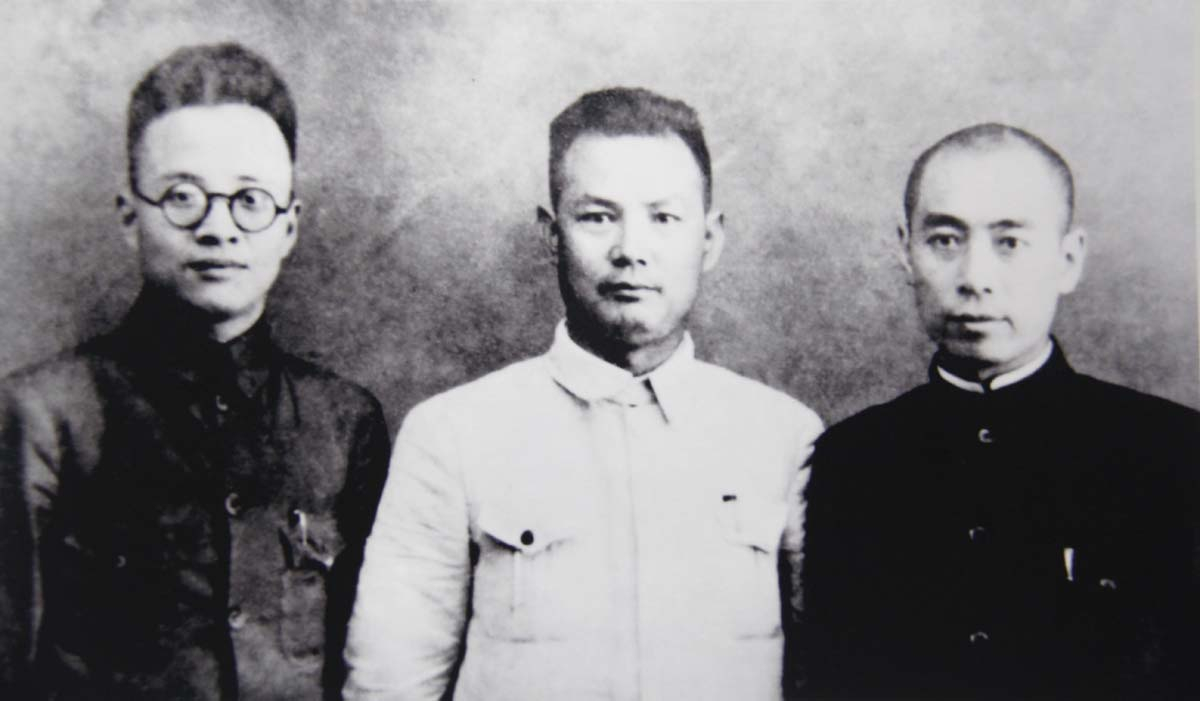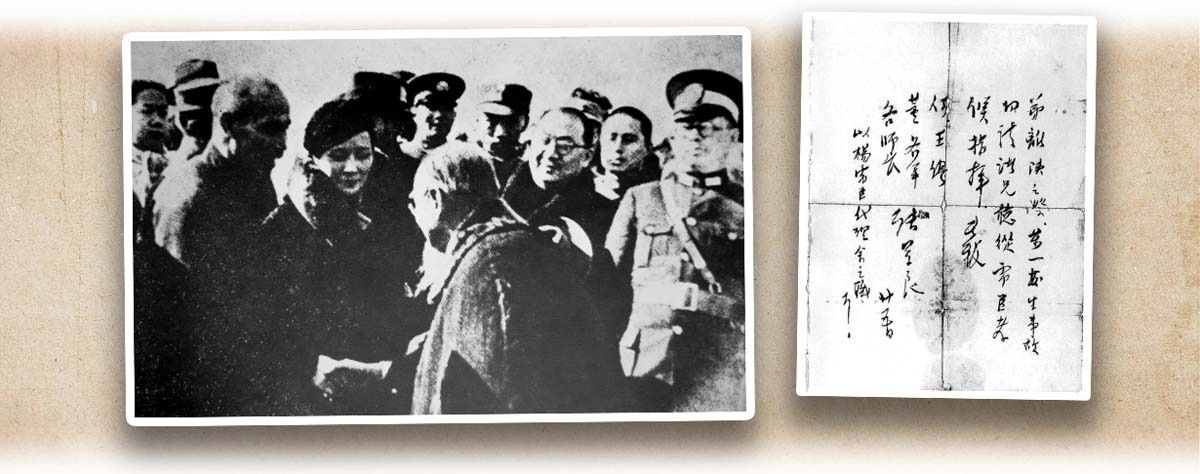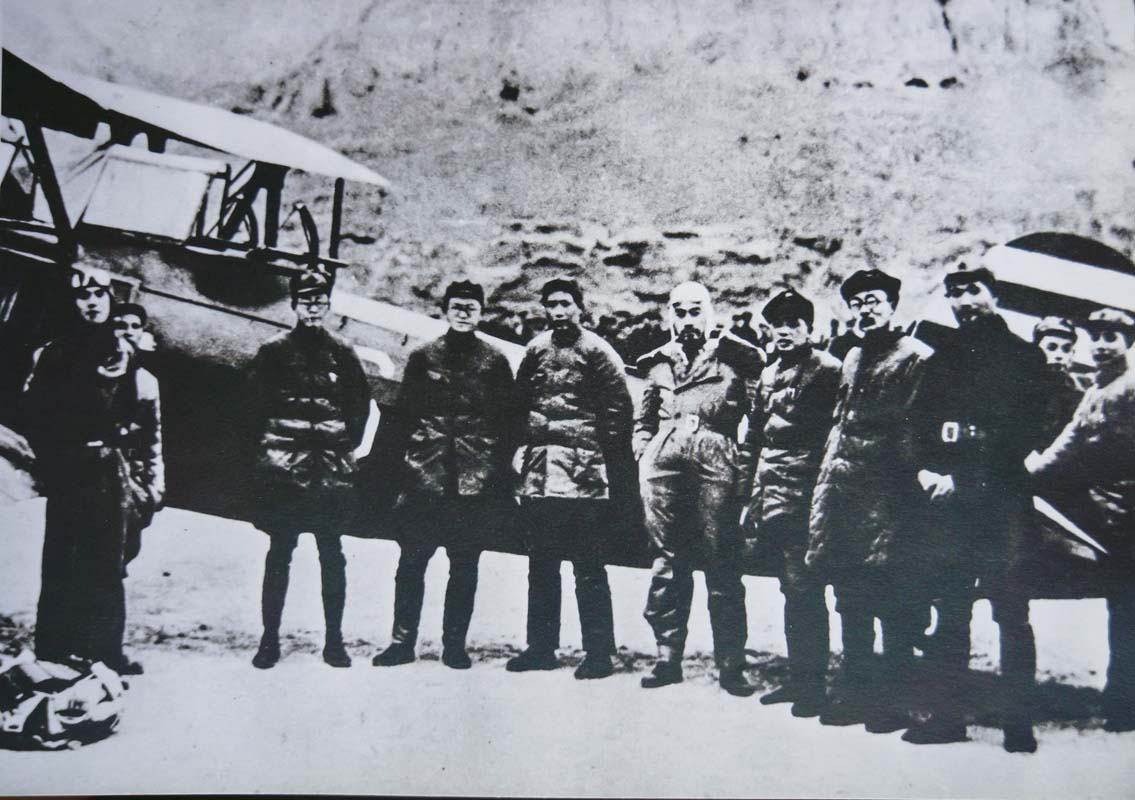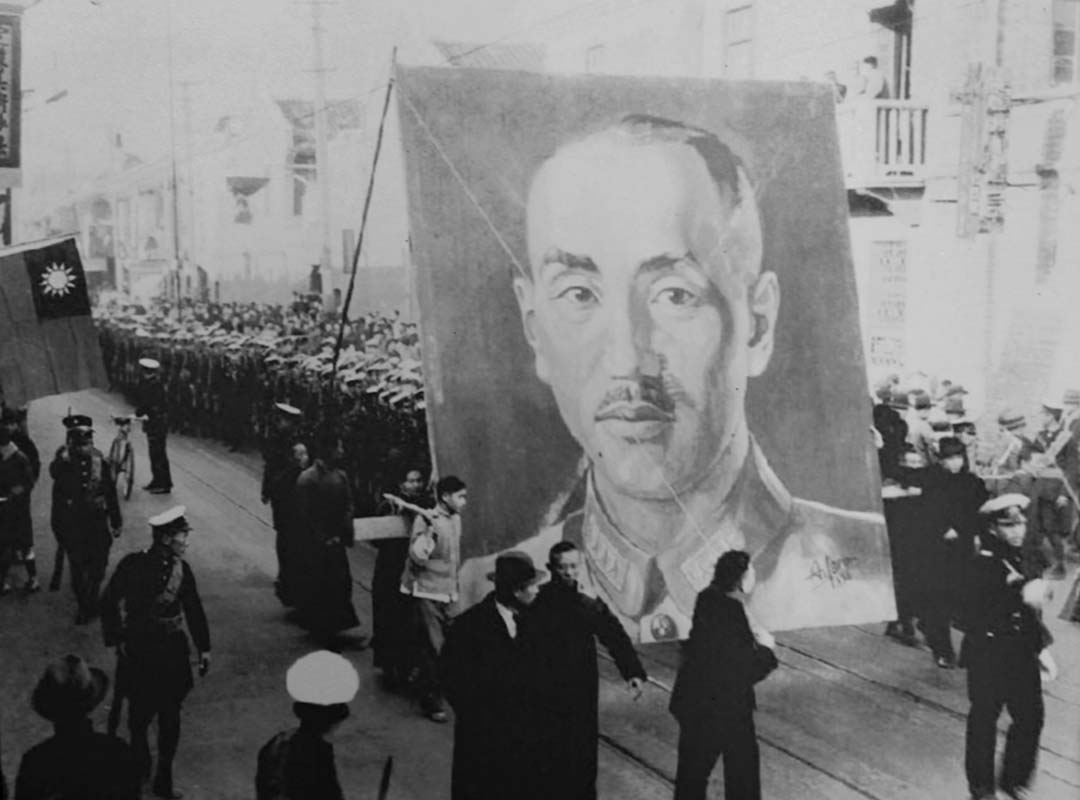“First internal pacification, then external resistance” was not only opposed by the Chinese public, but also incited resistance from some military and political personnel that eventually led to mutiny. From 1934 to 1936, the main forces of the Red Army of the Chinese Communist Party (CCP, 中國共產黨) completed the Long March and converged in northern Shaanxi Province (陝西). Meanwhile, the Nationalist Government of the Republic of China set up the Northwest Bandit Suppression Headquarters in Xi’an (西安) and transferred Zhang Xueliang’s (張學良) Northeast Army to Shaanxi and Gansu Province (甘肅) to cooperate with Yang Hucheng’s (楊虎城) Northwest Army to eradicate the Communists. However, Zhang and Yang, who had been in contact with the CCP several times, accepted the proposition of “ending the civil war and launching united resistance against Japan. In early December 1936, Chiang Kai-shek (蔣介石) went to Xi’an to supervise the extermination of the Communists. Zhang, the then Deputy Commander-in-chief of the Northwest Bandit Suppression Headquarters, and Yang, the Commander-in-chief of the 17th Route Army, tried to persuade Chiang to stop the civil war but failed. They thus launched an armed remonstrance on 12 December, which resulted in the detention of Chiang and the death of some in his entourage. This became known as the Xi’an Incident.
After the incident, Zhang and Yang telegrammed eight propositions on saving the country. Since the Soviet Union favoured a peaceful solution to this incident, the CCP sent a delegation headed by Zhou Enlai (周恩來) to mediate. Soong Mei-ling (宋美齡), Soong Tse-vung (宋子文), and the foreign adviser William Henry Donald also flew to Xi’an to seek reconciliation. After several rounds of negotiations, Chiang was released after he finally accepted the proposition of “stopping the extermination of the Communists and launching united resistance against Japan”. He returned to Nanjing (南京) on 26 December, accompanied by Zhang. The Xi’an Incident and its peaceful settlement basically end the decade-long civil war, embarking on a new phase of the second KMT-CCP coalition between CCP and the Kuomintang of China (KMT, 中國國民黨) to fight against Japan.
|
|
The two most important events in Zhang Xueliang’s life are the September 18th Incident and the Xi’an Incident. What is the general appraisal on his involvement in these two incidents? |
|
|
See answer below. |
Zhou Enlai, on behalf of the CCP, secretly met with Zhang Xueliang on 9 April 1936. A truce agreement was reached between the two sides, in which Zhang favoured the CCP’s idea of “ending the civil war and launching united resistance against Japan”. Left: Zhang in the 1930s. Right: Qiao’ergou (橋兒溝) Catholic Church of Yan’an (延安), Zhou and Zhang’s secret meeting venue.
In early December 1936, Chiang Kai-shek (first from the left) went to Xi’an to command the suppression of the Communists.
Left: the main gate of Huaqing Pool (華清池) in Xi’an in 1936. Right: New Town Building, the residence of Chiang Kai-shek at Huaqing Pool during the Xi’an Incident. Zhang Xueliang and Yang Hucheng opposed Chiang’s policy of “first internal pacification, then external resistance” and advocated an end to the civil war and the launch of united resistance against Japan. Unable to convince Chiang, Zhang and Yang decided to settle the dispute by force.
In the early hours of 12 December 1936, Zhang Xueliang and Yang Hucheng launched an armed remonstrance, which became known as the Xi’an Incident. In this incident, Zhang sent his Northeast Army to attack Chiang Kai-shek’s residence at Huaqing Pool and detained him. The photo shows the present-day view of Chiang’s shelter during the mutiny.
After the Xi’an Incident, the news that shook the whole country was all over the newspapers.
Left: Soong Mei-ling, Chiang Kai-shek’s wife, in the 1930s. Right: Soong and Chiang’s adviser William Henry Donald rushing to Xi’an for a reconciliation.
After the Xi’an Incident, Zhang Xueliang invited the CCP to send representatives to Xi’an for negotiations. The photo shows the CCP’s representatives at the time. From the left: Qin Bangxian (秦邦憲), Ye Jianying (葉劍英), and Zhou Enlai.
After the negotiations, Chiang Kai-shek agreed to stop the civil war and launch united resistance against Japan. Zhang Xueliang then accompanied him back to Nanjing. Left: dignitaries of the Nationalist Government came to greet Chiang and Soong Mei-ling after they flew back to Nanjing on 26 December 1936. Right: Zhang’s handwritten message to Yang Hucheng and other military personnel before he left Xi’an. After the Xi’an Incident, Zhang was put under house arrest for a long time, and Yang was killed in 1949 before the KMT retreated to Taiwan (台灣).
After the Xi’an Incident, Zhou Enlai (fourth from the right in the front row) returned to Yan’an, the base of the CCP Central Committee. Chiang Kai-shek stopped his campaign to exterminate the CCP after the Xi’an Incident, which gave the latter a chance to consolidate and develop.
After the settlement of the Xi’an Incident, people were marching on the streets with Chiang Kai-shek’s portrait for celebration. At the time, Chiang was seen as the right man to lead China’s resistance against Japan.
|
|
The two most important events in Zhang Xueliang’s life are the September 18th Incident and the Xi’an Incident. What is the general appraisal on his involvement in these two incidents? |
|
|
The most notable things Zhang Xueliang did in his lifetime are: He upheld national unity at the end of the Northern Expedition (北伐) and during the Central Plains War (中原大戰); he implemented the Non-Resistance Policy during Japan’s invasion of Northeast China; he failed to defend the Shanhai Pass (山海關) and Rehe Province (熱河) from Japan’s attacks; he participated in exterminating the Communists in Shaanxi and Gansu; and initiated the Xi’an Incident. However, the two most influential events he involved were the September 18th Incident and the Xi’an Incident. During the September 18th Incident, Zhang ordered his troops to implement the Non-Resistance Policy, which often brough him criticism. Although some believed that the policy was Chiang Kai-shek’s order, Zhang insisted that he was the one mainly responsible for it until his death. It was generally believed that Zhang should be held accountable for the loss of Northeast China for two reasons. First, he was the top military and political leader in Northeast China. Second, the Zhang family had ruled Northeast China for a long time since his father Zhang Zuolin (張作霖) established the Fengtian clique (奉﹝奉天﹞系). Due to different stances, the KMT and the CCP viewed the Xi’an Incident differently. For example, on the one hand Mao Zedong (毛澤東) said, “The Xi’an Incident liberated us from prison”, and Zhou Enlai appraised Zhang as a “National Hero” and “Hero of History”. On the other hand, Chiang sent him to the military tribunal and put him under house arrest for a long time. In 1990, Zhang regained his freedom and died at the age of 100 in 2001. |
Sources of most photos used in this feature piece: Fotoe.




